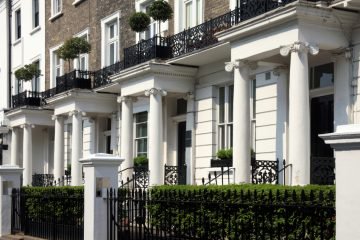House Prices Could Surge After Conservative Win
Before the general election, asking prices of homes coming onto the market dropped, unseasonal for May. However, with the Conservatives’ shocking win, the housing market could reverse, says Rightmove.
Rightmove found that uncertainty at the beginning of May caused vendors to price their homes “more aggressively”1 triggering a 0.1% decrease in the average asking price. In England and Wales, the average price asked for homes coming onto the market dropped by £242 to £285,891.
This figure makes May 2015 the first May in five years to experience lower asking prices than in April. Rightmove believes that the fall may be short-lived.
Commercial Director of Rightmove, Miles Shipside, says: “This is an election-driven price stall which gives some buyers only short-term relief from the backdrop of a long-term housing shortage, and many estate agents are now reporting a resurgence in interest following the surprise election result.
“Election uncertainty, and particularly the threats of financial penalties on landlords and those with properties valued at over £2m, put a brake on the market and their removal gives a reason for a rebound in activity and prices.”
The greatest drop in prices was seen in Greater London, where it is believed Labour’s proposed mansion tax and measures to challenge overseas investors were most likely to affect the market. Asking prices in the capital decreased by over £13,000 (2.3%) to an average of £581,074.
Contrastingly, the East of England witnessed price rises of 1.4% to an average asking price of £303,763. In the south and Wales, there were also increases of 1% and more.
Rightmove analysed new-seller data for the three months after the 2010 general election and observed a 17% rise in the amount of homes coming onto the market. The property portal predicts another rush of sellers now that the Conservatives are in power. For the buyers who have been faced with higher prices due to lack of supply, this news will be welcome.
Shipside continues: “In a traditional tight-stock market, an increase in supply of available property and greater competition among sellers to attract buyers may moderate their price expectations and make them more open to an offer.
“There may be a window for buyers to act now in this late spring market before prices rise in the next few months.”1
Soon after the election, estate agents for high-end London homes saw a surge in interest from buyers wishing to buy before prices rose again. Some agents expect prices in the luxury market to increase by up to 20%. Others predict price rises outside of the capital.
The Royal Institution of Chartered Surveyors (RICS) says that the shortage of homes coming onto the market will drive prices up. Read more: /property-prices-rise-due-to-lack-of-supply/. It has also advised the Government to build more homes.










